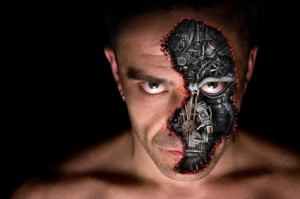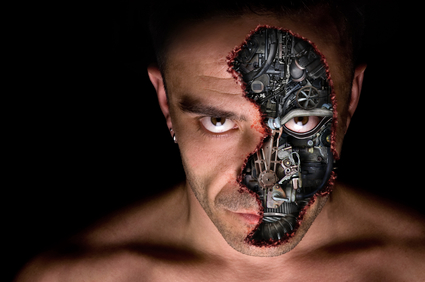
In his article on electricity and 19th century medicine, Dr. Matthis Krischel argued that Mary Shelley’s novel, Frankenstein, could be read as a Victorian science fiction novel that sought to imagine the medical possibilities of electricity. In the era where the scientific method was established within the biomedical sciences, Shelley’s novel raised the question of what the experimenter could ethically do to living, as well as dead bodies. That very same question continues to be debated today over the use of ECT (electroconvulsive therapy) to treat depression.
Krischel asked what physicians can learn from 19th century’s medical experiments with electricity. He commented that like the early 19th century, new technologies and therapies can instill fear in the public or individual patients. “Medical practitioners must take these reactions seriously and address them as well as use the tools of their trade responsibly in order not to turn loose another Frankensteinian monster.”
When reading the literature critical of ECT, I had an eerie déjà vu experience of Krischel’s description of the 19th century experiments with electricity in medicine. Philip Hickey reviewed an article by Max Fink, a supporter of ECT, celebrating 80 years of convulsive therapy. Even a mostly positive history of ECT written by Norman Endler in 1988, “The Origins of Electroconvulsive Therapy (ECT)”, acknowledged that ECT was controversial. The nature of ECT treatment, its history of abuse, unfavorable media presentation (Think “One Flew Over the Cuckoo’s Nest”), and compelling negative testimony by former patients paints a Frankenstein-like atmosphere at times.
Disturbingly, in “ECT: shock, lies and psychiatry,” Yvonne Jones and Steve Baldwin reported that during the very first ECT experiment on a human, the patient’s very clear objections were ignored. “Despite the man’s expressed wishes, Cerletti proceeded with his experimentation, and using a higher voltage, induced a convulsion.”
Peter Breggin has been a long time activist against ECT, going back to before his 1979 book, Electroshock. Dr. Breggin made this book, along with more than 125 scientific articles on injury from ECT, available on his ECT Resources Center website. He has also provided links to information on ECT from other sources, including his website, blogs and scientific articles he’s written.
In a 2010 article on ECT, Breggin noted that ECT therapy, and “the machines that deliver it,” have never been tested by the FDA for safety and efficacy. He gave an overview of several disturbing findings with ECT.
- The “treatment” process of ECT delivers sufficient trauma to the brain to cause a severe grand mal seizure. “There can be no scientific doubt that ECT harms the brain and mental function. The only controversy surrounds the severity and persistence of the harm.”
- New evidence (here and here) confirms that ECT produces lasting memory dysfunction and other cognitive deficits. It contradicts claims by shock advocates “that ECT does not cause brain damage.”
- ECT is frequently used with the elderly, where it causes even more severe dysfunction to the fragile, older brain.
- Despite several decades of effort, no lasting improvements from ECT can be demonstrated. “The Consensus Development Conference on ECT found that controlled clinical trials failed to demonstrate any positive effect beyond four weeks.” There’s no clear evidence of a reduction in suicide risk. Several studies have shown that a placebo ECT procedure produces as much improvement as ECT itself, “without any of the risks.”
In a 1998 article, Dr. Breggin gave an extensive review of the problems resulting from ECT treatment. One of the more disturbing ones to me was that of iatrogenic [caused by medical treatment or examination] helplessness and denial. Consistent with other individuals with central nervous system damage, ECT patients minimize or deny their real losses of mental function. Think of someone you know with dementia or Alzheimer’s. “Interviews with family and friends of patients often disclose that they are painfully aware of the damage done to their loved ones. Often, the psychiatrist is the only one who consistently and unequivocally denies the patient’s damaged state.”
At the Consensus Conference on ECT in 1985, critics and advocates debated whether there was any benefit from ECT. “The advocates were unable to come forth with a single controlled study showing that ECT had a positive effect beyond 4 weeks.” Breggin commented how this confirmed the brain-disabling principle of ECT, since “4 weeks is the approximate time for recovery from the most obvious mind-numbing or euphoric effects of the ECT-induced acute organic brain syndrome.”
Matthis Krischel correctly observed that Frankenstein could be read in a way that imagined the medical possibilities of electricity. Shelley eloquently captured the just discussed temporary mood-lifting effects of ECT:
For a moment my soul was elevated from its debasing and miserable fears to which these sights were the monuments and the remembrances. For an instant I dared to shake off my chains, and look around me with a free and lofty spirit; but the iron had eaten into my flesh, and I sank again, trembling and hopeless, into my miserable self.” (Mary Shelley, Frankenstein)





